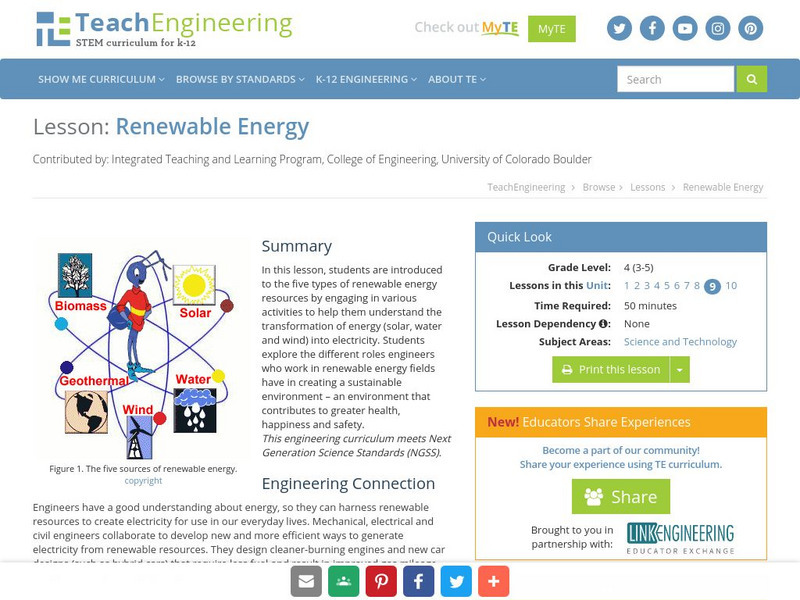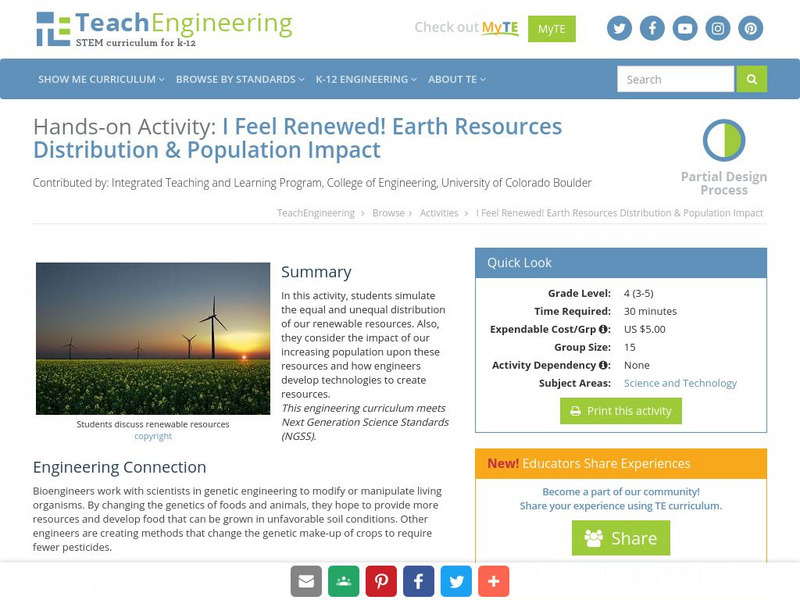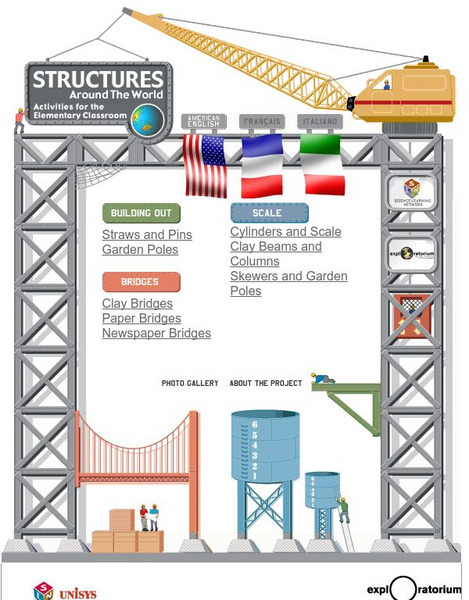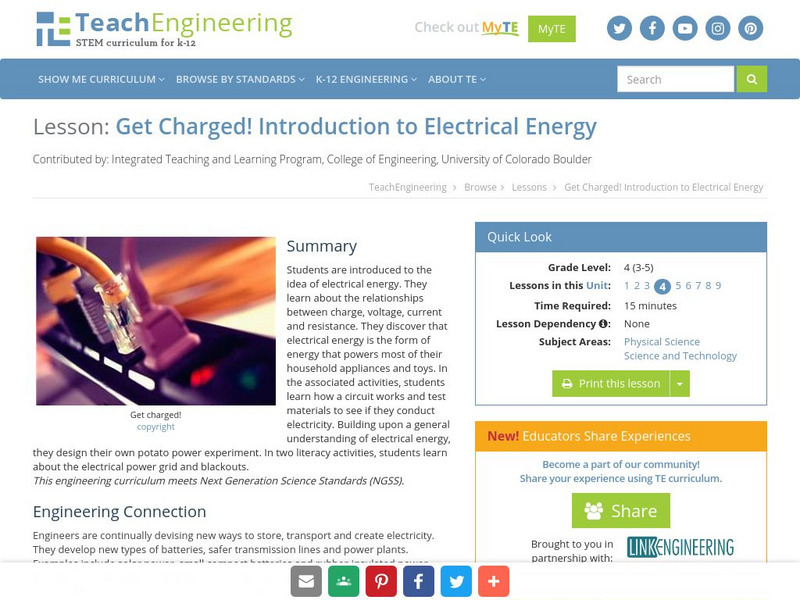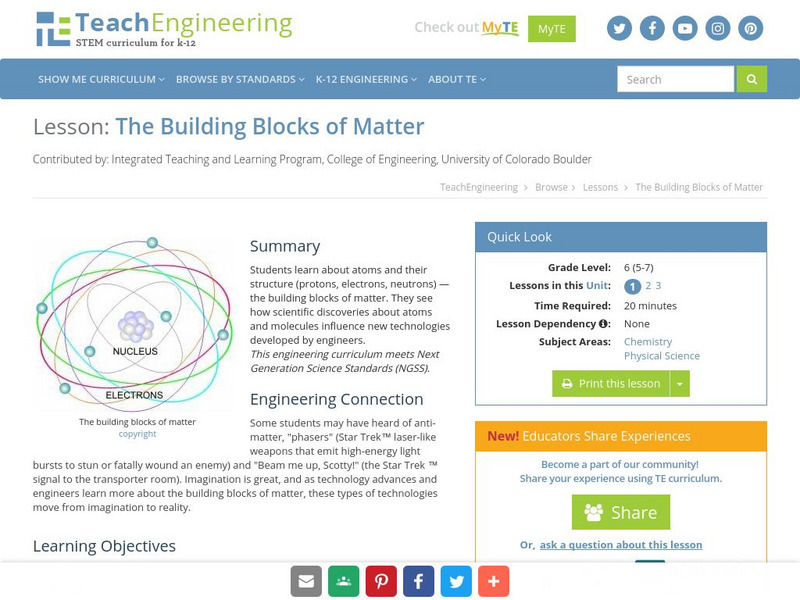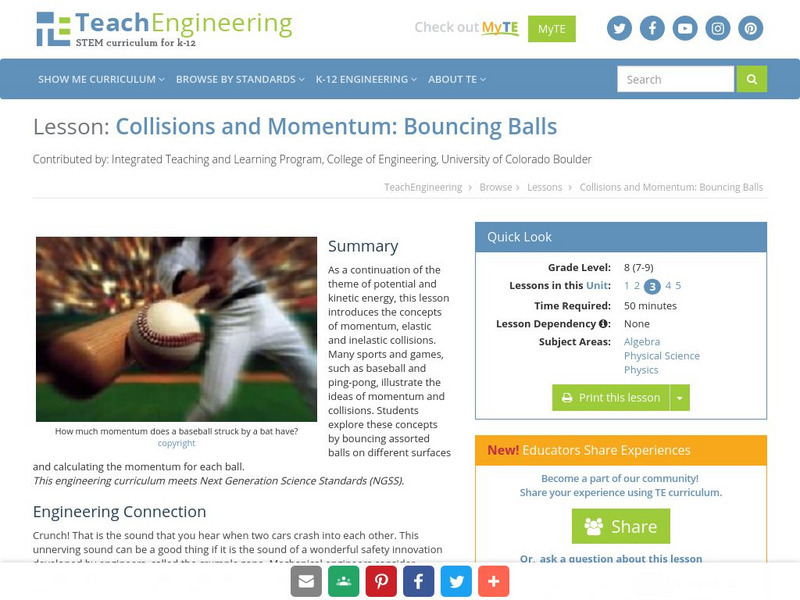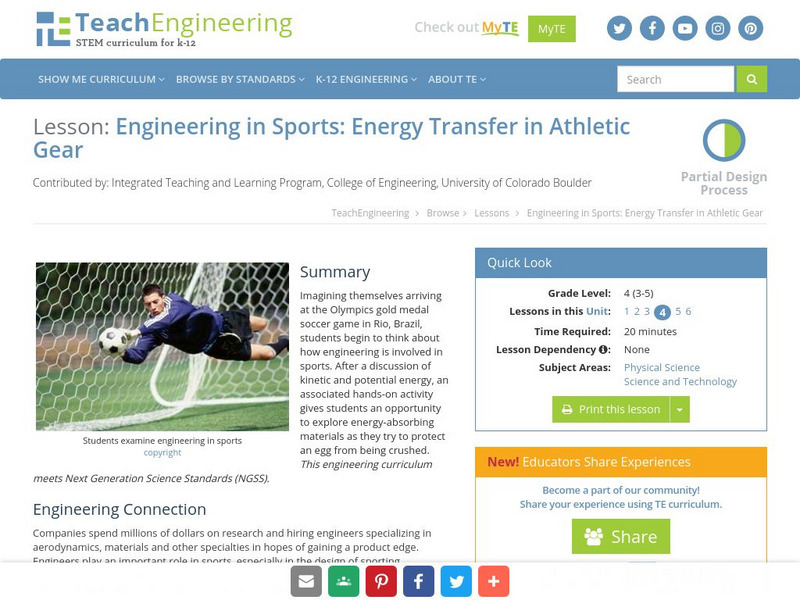TeachEngineering
Teach Engineering: Simon Says Big Amplitude, Small Wavelength!
In this activity, students play the game Simon Says to make the amplitudes and wavelengths defined by the teacher. First they play alone, and then they play with a partner using a piece of rope.
TeachEngineering
Teach Engineering: Renewable Energy
In this lesson, students are introduced to the types of renewable energy resources. They are involved in activities to help them understand the transformation of energy (solar, water and wind) into electricity. Students explore the...
TeachEngineering
Teach Engineering: I Feel Renewed!
In this activity, students will simulate the equal and unequal distribution of our renewable resources. Also, they will consider the impact of our increasing population upon these resources and how engineers develop technologies to...
Exploratorium
Exploratorium: Structures Around the World
How does that bridge stay up? What are the forces acting on that column? This site helps students understand how structures can be built by having them build their own. Also provides images of real structures for kids to compare with...
Massachusetts Institute of Technology
Mit: Open Course Ware: Introduction to Numerical Analysis for Engineering
College-level electrical engineering course highlighting numerical analysis for engineers. This course introduces students to the formulation, methodology, and techniques for numerical solution of engineering problems. Course features...
Energy4Me
Energy4me: Energy Challenges
Read about the challenges of global energy use and consumption, and what solutions exist for today's engineers.
Better Lesson
Better Lesson: Those Darn Squirrels! Brainstorming Ideas
A silly read-aloud captures the attention of students who must jump right into action applying the engineering design process in an effort to stop the squirrels from eating the birdseed. To complete the brainstorming students will work...
Better Lesson
Better Lesson: Engineering Solutions
Anyone who has attempted one of those "claw machine" games at local restaurants or retailers knows how impossible it seems to win. This activity will get students using the engineering design process to develop a claw that will actually...
City College of New York
City Technology: Wind Up Toy
A series of three video tutorials with accompanying written instructions demonstrating how to make a wind-up toy.
Other
Smith College: Talk to Me
Experience engineering by applying science and math in the service of humanity through a story. Read the online novel, interact with the characters, and explore some engineering concepts.
Other
Exxon Mobile: Be an Engineer
Where can an engineering degree take students? Read the stories of innovative thinkers and engineers.
TeachEngineering
Teach Engineering: Earthquake in the Classroom
Students will learn how engineers construct buildings to withstand damage from earthquakes by building their own structure with toothpicks and marshmallows. Students will test how earthquake-proof their buildings are by testing them on...
TeachEngineering
Teach Engineering: Get Charged!
Students are introduced to the idea of electrical energy. They learn about the relationships between charge, voltage, current and resistance. They discover that electrical energy is the form of energy that powers most of their household...
TeachEngineering
Teach Engineering: Thar She Blows!
Students learn about wind as a source of renewable energy and explore the advantages and disadvantages wind turbines and wind farms. They also learn about the effectiveness of wind turbines in varying weather conditions and how engineers...
TeachEngineering
Teach Engineering: Olympic Engineering
The lesson begins by introducing Olympics as the unit theme. The purpose of this lesson is to introduce students to the techniques of engineering problem solving. Specific techniques covered in the lesson include brainstorming and the...
TeachEngineering
Teach Engineering: The Fundamental Building Blocks of Matter
This lesson plan explores the fundamentals of atoms and their structure. The building blocks of matter (protons, electrons, neutrons) are covered in detail. Students think about how atoms and molecules can influence new technologies...
TeachEngineering
Teach Engineering: Water, Water Everywhere
Students learn about floods, discovering that different types of floods occur from different water sources, but primarily from heavy rainfall. While floods occur naturally and have benefits such as creating fertile farmland, students...
Texas Instruments
Texas Instruments: How the Olympic Swimsuit Gives Athletes an Edge
In this activity students will look at the potential impact of an improvement in the equipment used by world-class swimmers. They will also look at the improvement in the world records for men and women in the 100 Meter Freestyle race.
TeachEngineering
Teach Engineering: Build an Anemometer
Students create their own anemometers which are instruments for measuring wind speed. They see how an anemometer measures wind speed by taking measurements at various school locations. They also learn about different types of...
TeachEngineering
Teach Engineering: Newspaper Tower
Students will be challenged to design and construct a tower out of newspaper. They will have limited supplies including newspaper, tape, and scissors since engineers are often restricted by economic reasons as to how much material they...
TeachEngineering
Teach Engineering: Tower Investigation and the Egg
Towers have been a part of developed society for centuries. Towers serve a variety of purposes, from lookouts to cellular towers. In this activity student groups will build three types of towers, engineering them to hold an egg one foot...
TeachEngineering
Teach Engineering: Collisions and Momentum: Bouncing Balls
As a continuation of the theme of potential and kinetic energy, this lesson introduces the concepts of momentum, elastic and inelastic collisions. Many sports and games, such as baseball and ping-pong, illustrate the ideas of momentum...
TeachEngineering
Teach Engineering: Engineering in Sports
Imagining themselves arriving at the Olympic gold medal soccer game in Beijing, students begin to think about how engineering is involved in sports. After a discussion of kinetic and potential energy, an associated hands-on activity...
TeachEngineering
Teach Engineering: Strong as the Weakest Link
To introduce the two types of stress that materials undergo - compression and tension - students examine compressive and tensile forces and learn about bridges and skyscrapers. They construct their own building structure using...

